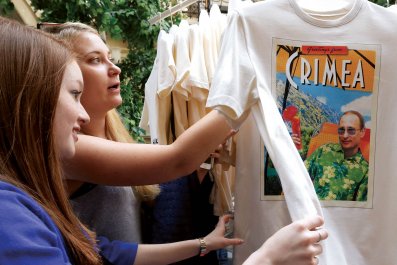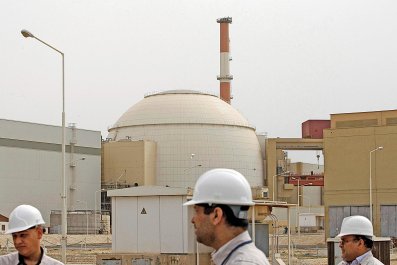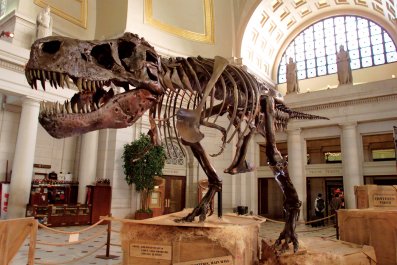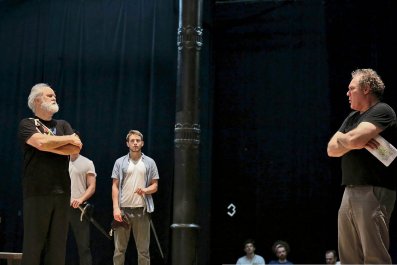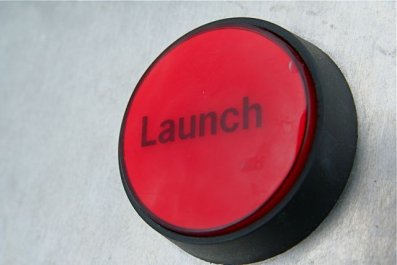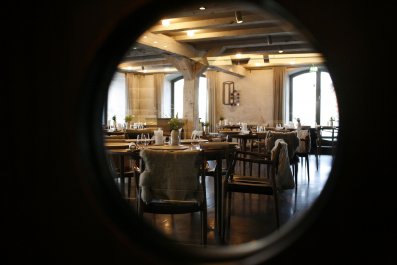Two of the hippest places to work operate out of anti-offices.
At Airbnb's headquarters in San Francisco, every meeting area is decorated to look, in remarkable detail, like some Airbnb rental somewhere in the world. One conference room is modeled on the War Room in Dr. Strangelove. In New York City, product innovation company Quirky's offices in a former warehouse look like a cross between a hip nightclub and a giant preschool, outfitted with a conference table made from industrial fans and a giant map that shows where your colleagues are going on vacation. (All employees can take as much vacation as they want. Yay!) The sign on the front entrance says: "Deliveries & humans: 7th Floor. Suits: Go away."
Technology is giving the office an identity crisis. Even the word office now sounds like something your father went to. "We're going through a 100-year shift in work," says Adam Pisoni, co-founder of Yammer, which is now part of Microsoft. "There's a real tension today between old and new."
Or as a recent Herman Miller research project concluded: "Long-established workplace norms are giving way to disruption and uncertainty."
Twenty years ago, the office existed because it was the only place to get real work done. The reason to go to the office was to access information and technology…and other employees. This is why so many offices looked like shit, with their Dilbert cubicles and fluorescent lighting. Like an old, single man with a fortune, offices didn't need to look good to attract talent.
Cloud computing is throwing the last shovelfuls of dirt on the traditional office. All the information and software that used to be locked inside offices can be tapped into from anywhere. Think of all the other things you used to have to go to the office for: a computer, a long-distance phone line, copiers, fax machines, files, mail, an art department that could make foils to go in the overhead projector for presentations in pre-PowerPoint days. Now you can get all of that on a laptop while sitting in a Starbucks. Private offices, surveys show, are empty 77 percent of the time.
Starbucks, by the way, has long billed itself as the "third place" in American life. Home is the first place; office the second. Maybe Starbucks is going to suffer its own identity crisis when the third place becomes the second place.
Companies such as Yammer, which makes a kind of intra-company Twitter, and Herman Miller, the furniture maker that invented the cubicle, have been trying to understand the next-generation office. It helps to start with historical context.
If you go back long enough, there were no real offices. The Egyptians constructed pyramids, not office towers. In the Middle Ages, people in Europe erected cathedrals. In London in 1729, the East India Company built perhaps the first office building. Still, in those days most professionals worked at home, in what they called a library. Thomas Jefferson had a library at Monticello. There was no "home office" at Monticello.
The offices of the 20th century reflected the technology driving business and society. The middle part of the century was all about industry and production, so offices looked like Jack Lemmon's workplace in The Apartment—rows of desks strung out like an assembly line. The 1960s gave birth to the Information Age, and workers were expected to hunker down and think. Companies gave them cubicles.
So what now? Information is a commodity. Technology is available everywhere to everybody. Employees don't have to go anywhere to access other employees—not in the age of Yammer and Skype video calls and Google Hangouts. Companies aren't even made up of just employees anymore. In this ultra-networked age, a lot of business gets done by a core group from the company connected to a matrix of contractors and freelancers.
For many companies, then, the most valuable assets have become creativity and culture. The companies with the best ideas win. And the companies that can carve out an identity and image win.
As designers look at those changes in business, they're thinking that offices have to be someplace you'd want to go for the same reasons you want to go to a bar, even though you can make a good whiskey sour at home: connections to people, a pleasing place to hang out, and maybe a getaway from your spouse or from that laundry basket crying out to be emptied. Desks and offices are going away in favor of funky gathering spaces and nooks where you can take a laptop and think on your own. It has to feel like a place where employees and outside partners enjoy bonding and collaborating, says Ryan Anderson, Herman Miller's director of future technology.
Companies used to spread the corporate culture by infusing it into employees through training, memos, gatherings. IBM even had company songs in the 1930s and '40s. But if a company is now more of a constantly morphing band of insiders and outsiders, the office might be one of the most important tools for creating culture. If a bunch of strangers gather in an Irish bar, they'll start singing Irish songs. If a mixed bag of people gather at Airbnb, the surroundings need to help them feel Airbnb-ish.
So this is why Quirky's space is quirky and Airbnb's looks like somebody's kitchen in Helsinki and Etsy's feels as if a flea market might break out at any second. These young companies aren't just eccentric outliers building fanciful work spaces. They seem to be leading the march out of our cubicles, toward the next thing in working together.
Either that or I'll see you at Starbucks.






